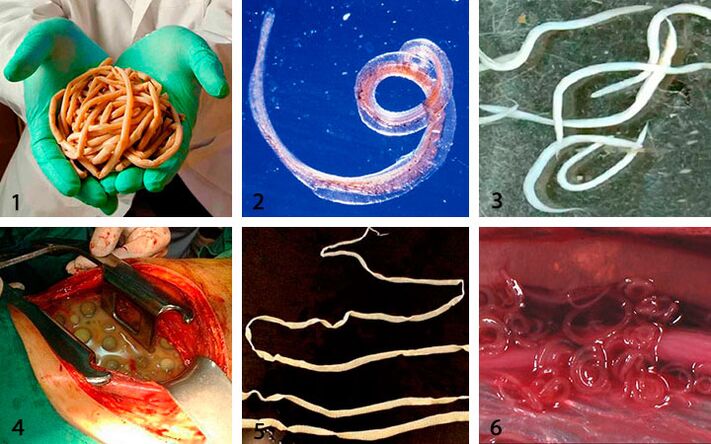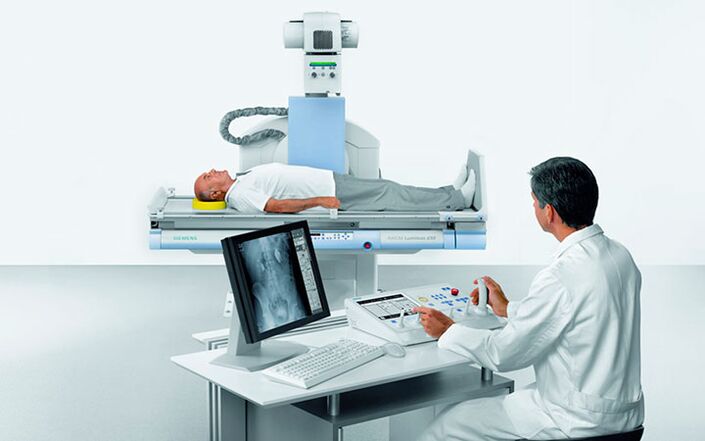
What are the signs of the presence of worms in humans, symptoms of helminthiasis are persistent or temporary?Is it possible to recognize the disease at an early stage of development and how to do it without resorting to doctors?
There are a number of specific symptoms that directly indicate the presence of dangerous "neighbors" in the body.
The main signs of helminthiasis
Symptoms of the presence of worms in an adult are diverse.There are several signs that indicate that worms live in the body.
List of specific features:
- parasites in the human body lead to the appearance of pain in the intestines;
- There are problems with the chair;
- bruxism (a characteristic rattle of teeth that occurs at night);
- a person loses weight (weight loss occurs due to the fact that the parasite eats at the expense of the owner and deprives it of the necessary vitamins and microelements);
- stomach irritation (colitis, irritated intestinal syndrome on an ongoing basis);
- Sleep disturbances appear (the patient can be disturbed by itching in the anal region, which occurs due to the release of parasites for laying eggs).
These symptoms of infection are specific in nature, that is, they can directly indicate the presence of parasites of the body.
But there are non -specific symptoms of the presence of parasites, these include:
- Coughing, breathing problems, inflammatory process in the area of the respiratory system.
- Headaches, problems with blood pressure in the blood (the level of blood pressure rides, can be high, or it may suddenly decrease).
- Nervous overvoltage (unstable state of the psyche).
- Local type allergic reactions.
- Granulosis (larvae grow with connective tissue, forming a small size of tumor formations).
- Oncological diseases (develop against the background of a decrease in the activity of the immune system).
- Weakening of immunity (development of autoimmune diseases, frequent acute respiratory viral infections and acute respiratory infections).
- Inflammation of the kidneys or pyelonephritis (occurs against the background of a parasitic disease).
- Inflammation of the gallbladder (cholecystitis with the blockage of the ducts).
The disease can manifest itself differently, but indirectly these signs indicate the presence of helminths.
Signs of infection depending on the affected organ
The first signs of parasites in the human body:

- If the liver is affected.There are signs of cholelithiasis, the duct can be clogged with a larva or an adult helminth.Under the eyes there are yellow spots, the skin changes the shade.There is an unpleasant taste after eating, belching with bitterness, pain appears in the right hypochondrium.
- If the intestines are affected.The first signs of intoxication occur, anemia appears.The body weight decreases sharply and increases.Against the background of helminthic invasion, weakness, fatigue and other symptoms of overwork appear.The appetite weakens, nausea appears after eating.There is pain in the intestines, bloating, pain in the stomach after eating.
- If the kidneys are affected.The characteristic signs of pyelonephritis arise, the outflow of urine is disturbed, the structure of the kidneys is inflamed and modified.Pain appears in the lower back, there is a pain syndrome during urination.
- If the lungs are affected.In the tissues of lungs and bronchi there are ascaride larvae, against which the infected person has a persistent, very unpleasant cough.It is difficult to cope with it with the help of drugs.After jerking, sputum appears.
At the early stage of development, it is quite difficult to recognize the disease.Parasites in the human body have not yet settled.
Symptoms depending on the type of parasite
Read more about the symptoms of the manifestation of worms in humans:
- Askarids.Infection passes in a different way, but being in the intestines, an adult female lays up to 25 thousand eggs, they are covered with a special shell, which consists of 3 layers.Eggs are in the intestines, with a sufficient amount of oxygen and observing the temperature conditions, the egg turns into a larva and is sent to “travel” through the body with blood flow.Once in the lungs, the larva leads to the appearance of a cough.With jerking, she again goes to the intestines, where she continues to develop and after a while turns into a mature individual.The life cycle of the ascarides is 12 months.During this year, the individual is in the intestines, lays eggs that come out with feces.
- Vlashev.Due to the features of the structure, this worm can violate the integrity of the intestinal membrane.He feeds on human blood, while his presence in the intestine leads to various consequences.Since the worm is in the large intestine, its functioning (nutrition of the host blood) leads to the accession of a secondary infection, appendicitis occurs.
- Speakers.These are parasites, belong to the class of intestinal NEMATODES, they most often amaze children.If measures are not taken in time, then the risk of developing enterobiosis is great.With repeated infection, the risk of relapse of the disease increases.
- Echinococcus.It exists in several forms, cysts can infect fabrics, setting a certain cavity.But the parasite itself lives in the intestines, it can be infected when in contact with animals (cats, dogs, domestic pigs), also Helminth is transmitted from humans to humans.
- Wide tape.It enters the human body in the form of a larva, infection occurs after eating fish, which has not passed proper heat treatment.The larva enters the small intestine, where it lives and develops for a long period of time, an adult individual can reach several meters in length.
- Speakers.This intestinal nematode most often affects the children.Causes Enterobiasis.In the absence of treatment, remission may occur if the probability of re -infection may minimize.

Changes are observed on an ongoing basis, the body cannot recover, it is difficult for it to cope with the loss of blood and nutrients.
Infection methods and possible consequences
What is the danger of worms for a person:
- lead to a weakening of the activity of the immune system (against the background of a deficiency of immunity, health problems arise);
- Anemia of a chronic nature appears (worms feed on blood, absorbing nutrients and vitamins with it);
- against the background of infection, leukocytosis develops (the level of leukocytes in the blood increases, since the body is actively trying to cope with parasites with the help of white blood cells);
- If a large number of helminths live in the intestines, they can lead to its obstruction;
- cholecystitis (occurs if the bile tributaries are clogged with worms);
- Pneumonia (in the stage of migration, the larva can fall into the lungs and cause their inflammation).

If the treatment of the disease is selected incorrectly, it is carried out untimely or will be completely absent, then various diseases will occur, both inflammatory and autoimmune nature.
How the worms are transmitted:
- You can infect when contacting a person who has helminths.
- Airborne droplets (inhalation of eggs).
- Through water and food.
- Through the soil.
It is not difficult to get infected with helminths, it is enough to regularly neglect personal hygiene rules so that problems of a certain nature occur.
Diagnostic methods
Diagnosis of worms in a person takes place in several stages:
- donate blood for analysis;
- take the feces for analysis;
- Make radiography.
A blood test is carried out in order to detect an increased amount of leukocytes and eosinophils in the blood.
The analysis of feces for worms is effective only if a person lives in a person’s body, and it is in the stage of migration (that is, she has already laid eggs), which the doctor during the examination and detects in feces.
X -ray has its own characteristics, its conduct is consistent with the doctor.Based on the results of the study, it is possible to obtain the necessary information about the presence of parasites in the respiratory organs and gastrointestinal tract.

What signs are characteristic of parasites, consideration of the result of the tests:
- Leukocytosis (increased amount of white blood cells in the body).
- Eosinophilia (increased in the blood of the amount of eosinophils, blood cells).
- The appearance of worms in feces.
The reasons for the appearance of worms are different and, according to statistics, then about 85% of people around the planet are infected with helminths.The reason is that the treatment of helminthiasis has its own characteristics, takes place using various drugs and, in some cases, is not highly effective.
How to find out if there are parasites in the body:
- It is worth consulting a doctor when characteristic symptoms appear;
- take the necessary tests;
- Get the results.
Signs of the appearance of worms in a person are not as clear as it might seem at first glance.For this reason, if certain problems have appeared, you should not pull with an appeal to the doctor.























